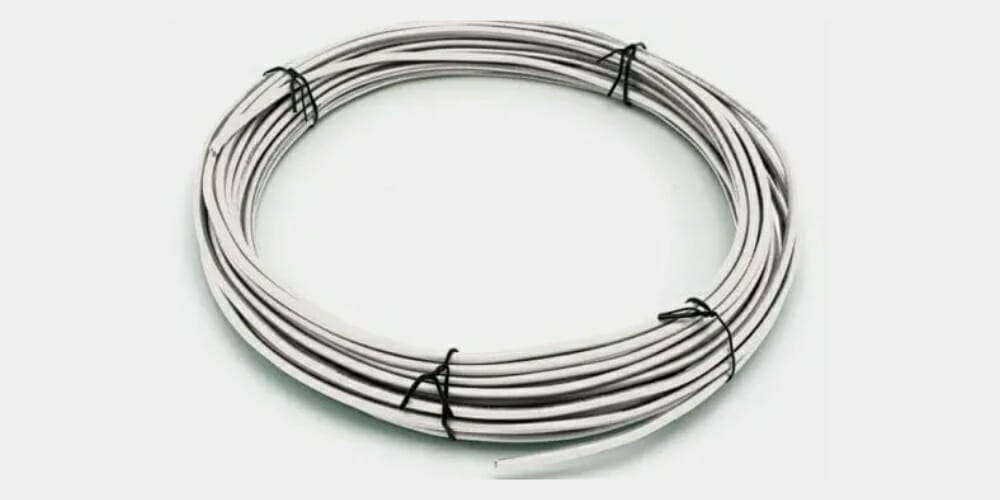Adding a neutral wire to a light switch is an easy DIY project if you have the time. Learn how to install a neutral wire to a light switch, wire it up properly, and attach it to the outlet in our guide below.
Adding a Neutral Wire To a Light Switch
Below we go through a wiring diagram of how you need to wire a neutral wire to the light switch and how it would work in your home. However, before we go through all this process it is really crucial to know that there are smart light switches as well that follow different rules.
1. Each electrical circuit in our home is defined by the hot wire side and neutral wire side.

2. The hotwire goes to an outlet and then on the other side of the outlet usually you have a neutral wire that comes back to the electrical panel.
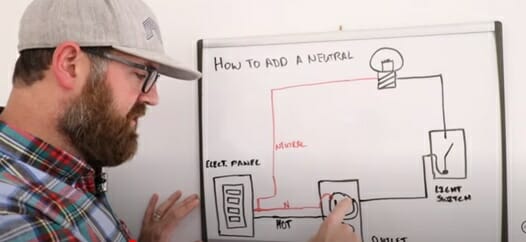
3. Hence, if you want to add a neutral wire to the light switches, there usually is an outlet on that same circuit somewhere that has a neutral wire but it doesn’t always run to the light switch. There are plenty of light switches that do require a neutral wire for smart lightning and that’s because we use the neutral wire to power a Wi-Fi chip in a smart bulb without powering the lighting circuit.
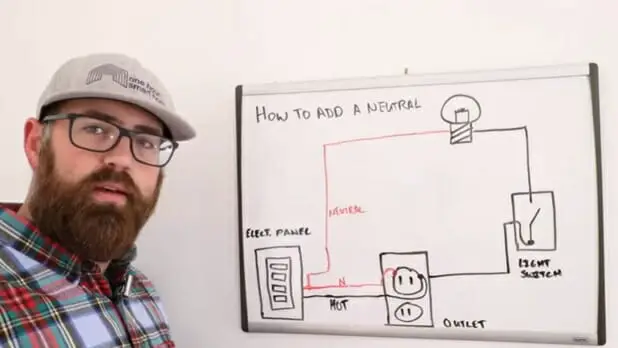
4. The Hotwire goes to the light switch. The technical term for this wire coming out of the light switch to the light fixture or device that is empowered is called the load wire.
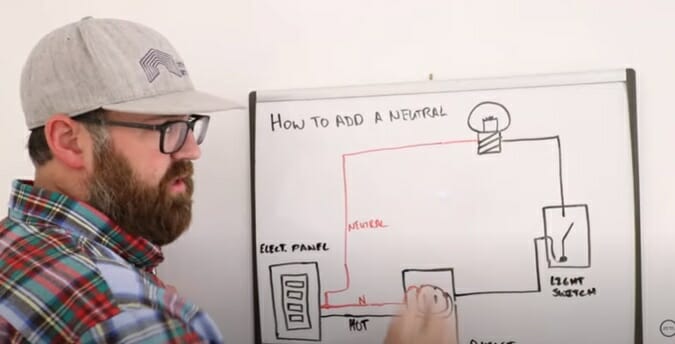
5. As the light switch closes, then the power from the hot wire through the outlet to the light switch then flows through the load wire and goes to the light bulb and lights up the bulb.

6. The current from the light bulb will go back down to the electrical panel.
7. On the other hand, the neutral wire could be wired down to the outlet or it could go back to the panel.
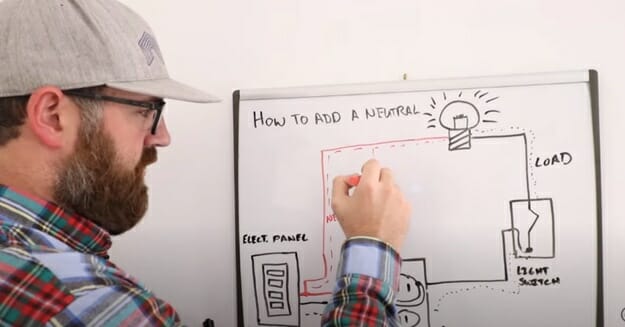
8. Hence, there is a neutral wire at the backside of the light bulb, so you could somehow bring it down to the light switch. Moreover, you could go back to the light fixture and find that neutral wire which will be on the other side of the load wire and you can run that wire back down to the light switch. That’s how a neutral wire can be added to your smart switch.
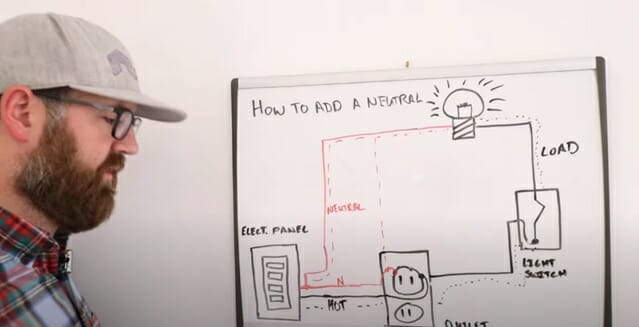
9. The other option you have is to make sure that this neutral wire is on the same circuit. This means that you could go from the outlet and you could splice at the neutral wire on the other outlet on the same circuit and you can run a neutral wire to the light switch.
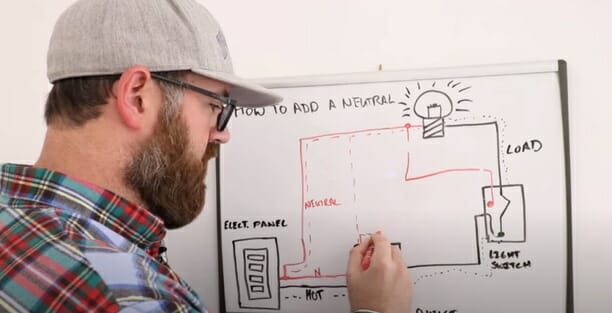
As for the second one, you will need to use a conduit. ‘A conduit is a channel that will let you take the wire to its destination. In this process, you will have to add the neutral wire to the switch from the outlet portion.
As you have learned earlier the neutral wire is linked to the electric panel from the outlet. So, what you are going to do is get the neutral wire from behind the outlet with the help of a conduit and link it to the switch. It will do the same thing as the previous process.
Importance of Neutral wires
Neutral wires are great since they transmit the circuit back to the original power source.
A more practical function of the neutral wire is to bring the circuit to a ground typically connected to the electrical panel. This provides current flow through the electrical system that enables electricity to be manipulated and it acts as a return path for the hot wire current. (1)
The neutral wire impedance is in milliohm, and the unbalanced voltage of the load neutral point is the voltage drop of the neutral wire current. Even though the three-phase load is severely imbalanced, clamping the load’s neutral point potential to the power supply’s neutral point potential is sufficient. However, the ground resistance is several hundred times greater than the neutral wire impedance, it is difficult to clamp the load’s neutral point potential to the power supply’s neutral point potential.
Purpose of Neutral in Power Transmission
Through a step-down transformer, the power from the substation reaches our home at around11KV and this power is decreased by using the step-down transformer so that we can use it as 230/415V, hence the productivity of this transformer includes neutral.
The three windings of the transformer come together at the neutral point and we can consider it as a start point of the transformer.
To complete the electric circuit, a neutral wire acts as a return path and for this purpose, the electricity travels from a high potential to low potential.
In the transformer, the neutral wires will be grounded to halt the backflow of current that could happen in unbalanced systems.
Smart switches
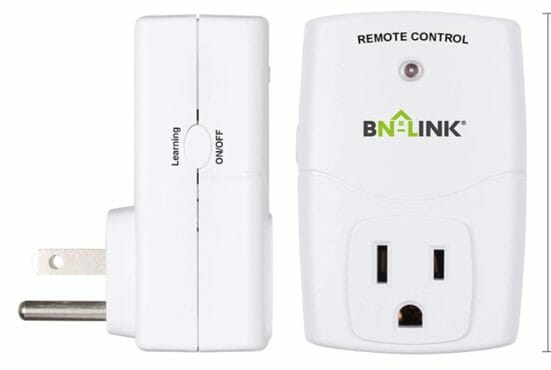
Smart switches are a replacement for standard switches, and they are used to increase the productivity of numerous appliances or equipment associated with them by improving how the item draws electricity.
Smart switches work in the same way as steady switches, but they may also be used by other smart apps and devices on your phone or another connected device. A smart switch may be controlled remotely using smartphone applications, remote controllers, and a variety of other interfaces. Smart switches are a more effective type of automation. (2)
Neutral Wire in Smart Switches
Numerous companies manufacture smart switches. Smart switches are more energy-sufficient and provide a higher level of comfort when compared to conventional switches. Some smart switches need a neutral wire and some don’t need a neutral wire. There are various ways to look for a neutral wire in smart switches.
Checking the Neutral Wire in a Switch Box
To check the neutral wire in the switch box, first of all, observe all security precautions
- You need to turn off the electrical panel.
- Remove the trim plate over the switch.
- Take off the screws from your switches and insert the current switch to look at the wires.
- If a white wire or a group of white wires appear, you likely have a neutral in that switch box.
While examining the switch box or panel box of your house, take care of yourself and use protective gear as electrical work is very hazardous.
Need for a Neutral Wire in Smart Switches
The neutral wire is essential as smart switches need to be powered all the time. Even when the switch is shut off and the lights are powered off, the neutral wire permits the circuit to be completed and the switch to have power.
A house hub is necessary for smart switches that do not require a neutral wire. A bridge is required because the hub rather than the microcontroller inside the smart switches control the programming for your login and wireless networks.
Smart switches, unlike traditional switches in your home, are always on standby since they may be turned on remotely at any instant. Consequently, the neutral wire in smart switches is crucial. The circuit of the smart switch is always completed with the assistance of a neutral wire, which is then utilized to turn the appliance on and off remotely.
A connection to a home hub is required for smart switches that do not require a neutral wire for operation.
In such smart switches, the smart home hub is required to retain its programming and deliver signals when its circuits are broken.
To control the smart switch remotely, the hub maintains the login information and wireless network details.
FAQ
How Much Will Adding A Neutral Wire Cost?
The installation of the neutral wire is a relatively simple task. Two switches should cost between $50 to $100. You don’t need a completely qualified electrician to do this, a reputable handyman would be capable to handle it. Consequently, you must do your homework before determining who you want to hire for the task. You will wind up paying a lot more if you hire a skilled and trained electrician instead of a handyman who is familiar with this type of work. Labor costs are substantially greater when you hire a professional. A handyman may charge you a one-time fee.
You may check the video below;
References
(1) electricity – https://www.britannica.com/science/electricity
(2) automation – https://www.britannica.com/technology/automation

